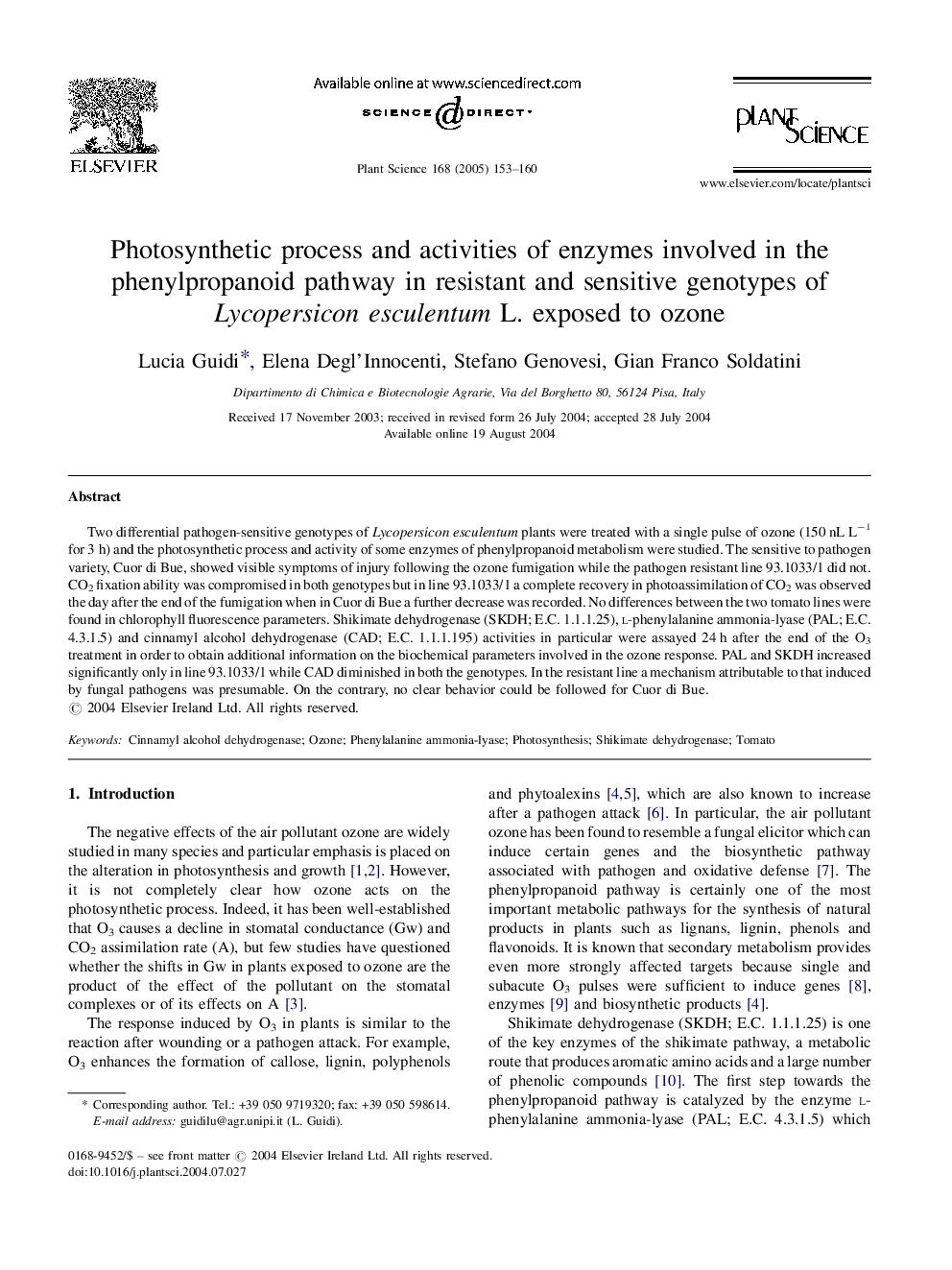| Article ID | Journal | Published Year | Pages | File Type |
|---|---|---|---|---|
| 10841025 | Plant Science | 2005 | 8 Pages |
Abstract
Two differential pathogen-sensitive genotypes of Lycopersicon esculentum plants were treated with a single pulse of ozone (150Â nLÂ Lâ1 for 3Â h) and the photosynthetic process and activity of some enzymes of phenylpropanoid metabolism were studied. The sensitive to pathogen variety, Cuor di Bue, showed visible symptoms of injury following the ozone fumigation while the pathogen resistant line 93.1033/1 did not. CO2 fixation ability was compromised in both genotypes but in line 93.1033/1 a complete recovery in photoassimilation of CO2 was observed the day after the end of the fumigation when in Cuor di Bue a further decrease was recorded. No differences between the two tomato lines were found in chlorophyll fluorescence parameters. Shikimate dehydrogenase (SKDH; E.C. 1.1.1.25), l-phenylalanine ammonia-lyase (PAL; E.C. 4.3.1.5) and cinnamyl alcohol dehydrogenase (CAD; E.C. 1.1.1.195) activities in particular were assayed 24Â h after the end of the O3 treatment in order to obtain additional information on the biochemical parameters involved in the ozone response. PAL and SKDH increased significantly only in line 93.1033/1 while CAD diminished in both the genotypes. In the resistant line a mechanism attributable to that induced by fungal pathogens was presumable. On the contrary, no clear behavior could be followed for Cuor di Bue.
Keywords
Related Topics
Life Sciences
Agricultural and Biological Sciences
Plant Science
Authors
Lucia Guidi, Elena Degl'Innocenti, Stefano Genovesi, Gian Franco Soldatini,
